Did you know that while software development accounts for just 3–4% of global CO₂ emissions, the world generated over 62 billion kilograms of electronic waste in 2022?
Out of that, only 22.% was formally collected and recycled, leading to the loss of nearly $62 billion worth of recoverable materials.
In this article, we'll explore how software's lower carbon footprint and its ability to recycle code make it a more eco-friendly option compared to traditional industries.
Understanding Carbon Footprints in Software and Product-Based Industries
Before that, let's understand what a carbon footprint is.
A carbon footprint measures the total greenhouse gas (GHG) emissions caused directly or indirectly by an activity or product. The higher the footprint, the more it contributes to climate change.
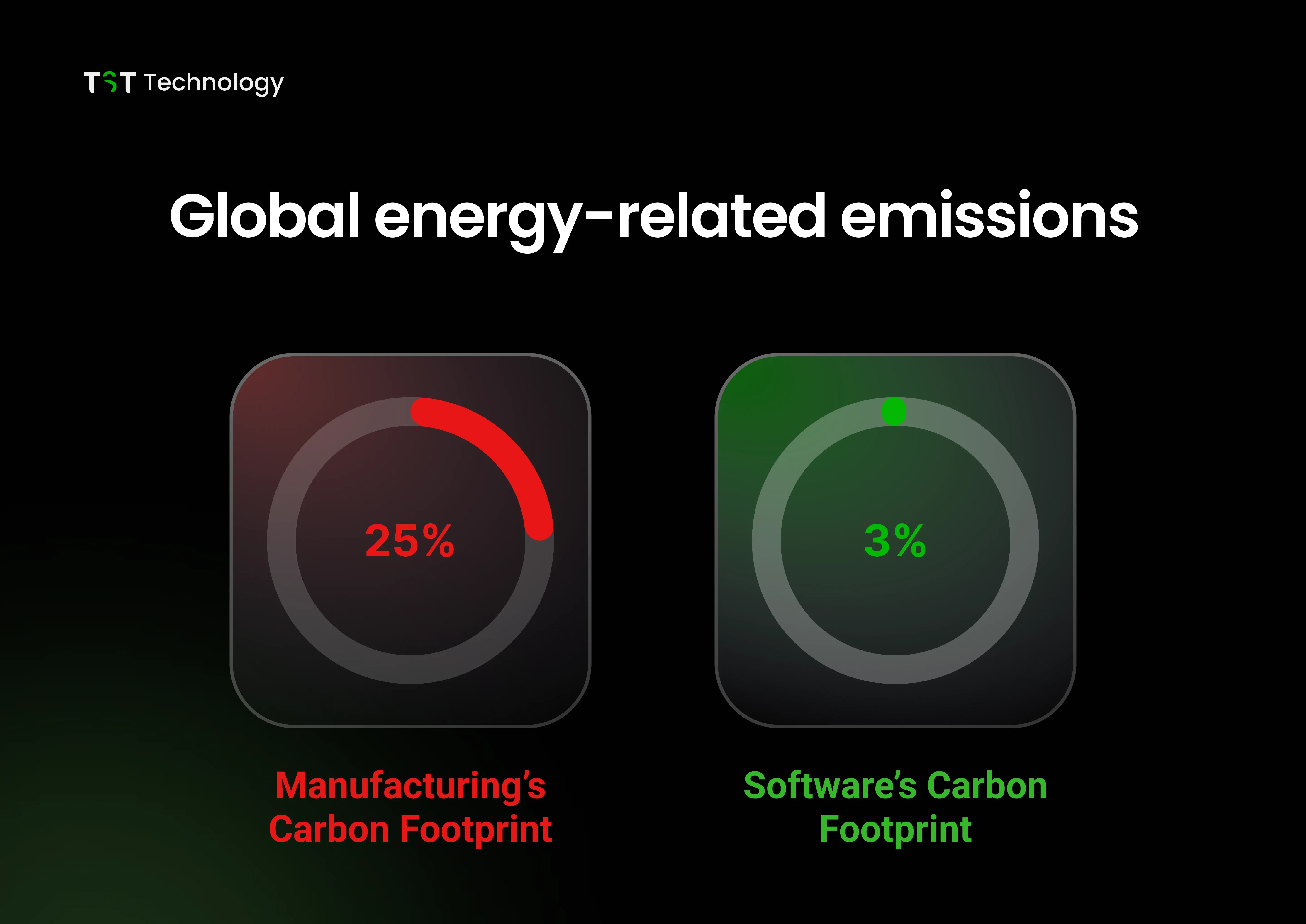
Manufacturing’s Carbon Footprint
In 2022, direct emissions from manufacturing processes such as fuel combustion and chemical reactions in steel, cement, and chemical production totaled approximately 9 Gt CO₂, representing 25 percent of global energy-related emissions.
Software’s Carbon Footprint
When we talk about sustainability in software development, the main environmental impacts come from:
- Data centers
- Developer machines and servers
- End-user devices (like phones and laptops)
According to the report, software causes about 3 to 5 percent of all global emissions. In 2022, data centers used between 240 and 340 terawatt-hours of electricity, which is roughly 1 percent of the world’s total electricity use.
Environmental Friendliness: Software’s Green Advantage
Software’s carbon sources are largely operational with electricity for servers, networks, and devices. Since software systems run digitally, their software carbon footprint is easier to measure and reduce over time.
In comparison, manufacturing causes pollution through steps like digging up raw materials, shipping products, and dealing with waste at the end, all of which usually harm the environment and are hard to avoid.
Lower Lifecycle Emissions
- A cloud app hosted in a green data center has a much smaller carbon footprint than producing a new gadget.
Continuous Optimization
- Software can be updated to run more efficiently. Manufacturing changes, however, require physical upgrades, new materials, and more energy.
Recycling: Code vs. Devices
| Aspect | Software (Code) | Manufacturing (Devices) |
| Recyclability | 100 percent reusable; zero-cost copies | Only 22 percent of e-waste is formally recycled |
| Harmful elements | None (digital) | Lead, mercury, cadmium, plastics, and rare earths |
| Waste generation | Zero additional waste | 62 Mt e-waste generated in 2022; only 22 percent recycled |
Recycling in Software: Reusable Code
Digital files can be copied and reused endlessly without any extra cost. There's no need to use physical resources or create waste. Modern tools make it easy to update and improve these files quickly, without being limited by physical materials.
One of the biggest wins in green software engineering is code reusability. Developers can repurpose libraries, frameworks, and modules across multiple projects without generating waste. Open-source software, for instance, allows developers worldwide to share and reuse code, reducing the need for redundant development efforts. This reusability minimizes energy consumption and computing resources, further lowering the industry’s carbon footprint.
For example, a single well-designed software library, like React for web development or TensorFlow for machine learning, can be used by millions of developers, eliminating the need to “reinvent the wheel” for each project. Updates and maintenance are also digital, requiring no physical resources beyond server energy. This starkly contrasts with the challenges of recycling physical products.
Recycling in Product-Based Industries: E-Waste Challenges
Electronics like smartphones, laptops, and other devices are adding to the world’s growing e-waste problem. In 2022, people produced 62 million metric tons of electronic waste globally.
But only 22% of it was properly collected and recycled. The rest was dumped in landfills or burned, releasing harmful chemicals like lead, mercury, and cadmium into the environment. Recycling physical products is complex due to the need to disassemble devices, separate materials, and process hazardous components safely.
For instance, recycling a smartphone involves extracting valuable materials like silver and lithium while safely disposing of toxic elements. This process is energy-intensive and often inefficient, as many devices are not designed for easy disassembly. The low recycling rate exacerbates the environmental impact, making product-based industries far less sustainable than software.
Harmful Elements: Code vs. Devices
Harmful Elements in Devices
Physical products often contain hazardous materials that pose environmental and health risks. Smartphones, for example, include heavy metals like mercury, lead, and cadmium, as well as flame-retardant chemicals. Improper disposal of these devices can lead to soil and water contamination, harming ecosystems and communities. Even when recycled, the process of handling these materials requires specialized facilities, which are not always available, particularly in developing regions.
Moreover, the mining of raw materials for manufacturing as cobalt for batteries or rare earth metals for electronics devastating environmental consequences. Mining operations often lead to deforestation, water pollution, and habitat destruction, further compounding the environmental toll of product-based industries.
Software: No Harmful Elements
Software, by contrast, is free of physically harmful elements. It exists purely in the digital realm, with no need for mining, chemical processing, or hazardous material handling.
The primary environmental concern for software is the energy used by servers and devices during development and deployment.
Best Practices for Green Software Development

1. Efficient Algorithms
- Selecting energy-efficient algorithms and compiled languages can drastically cut computational load. For example, C/C++ implementations may consume 45–75× less energy than Python for identical tasks.
2. Serverless and Edge Computing
- Auto-scaling architectures ensure resources match demand, reducing idle server energy waste.
3. Monitoring Software Carbon Intensity
- The Software Carbon Intensity (SCI) standard by the Green Software Foundation shows how to measure the carbon emissions for each software service or action. This helps companies compare results and make improvements.
Everyday CO₂ Emission Examples: Products vs Software
Product Examples
1. Fast Fashion Clothing
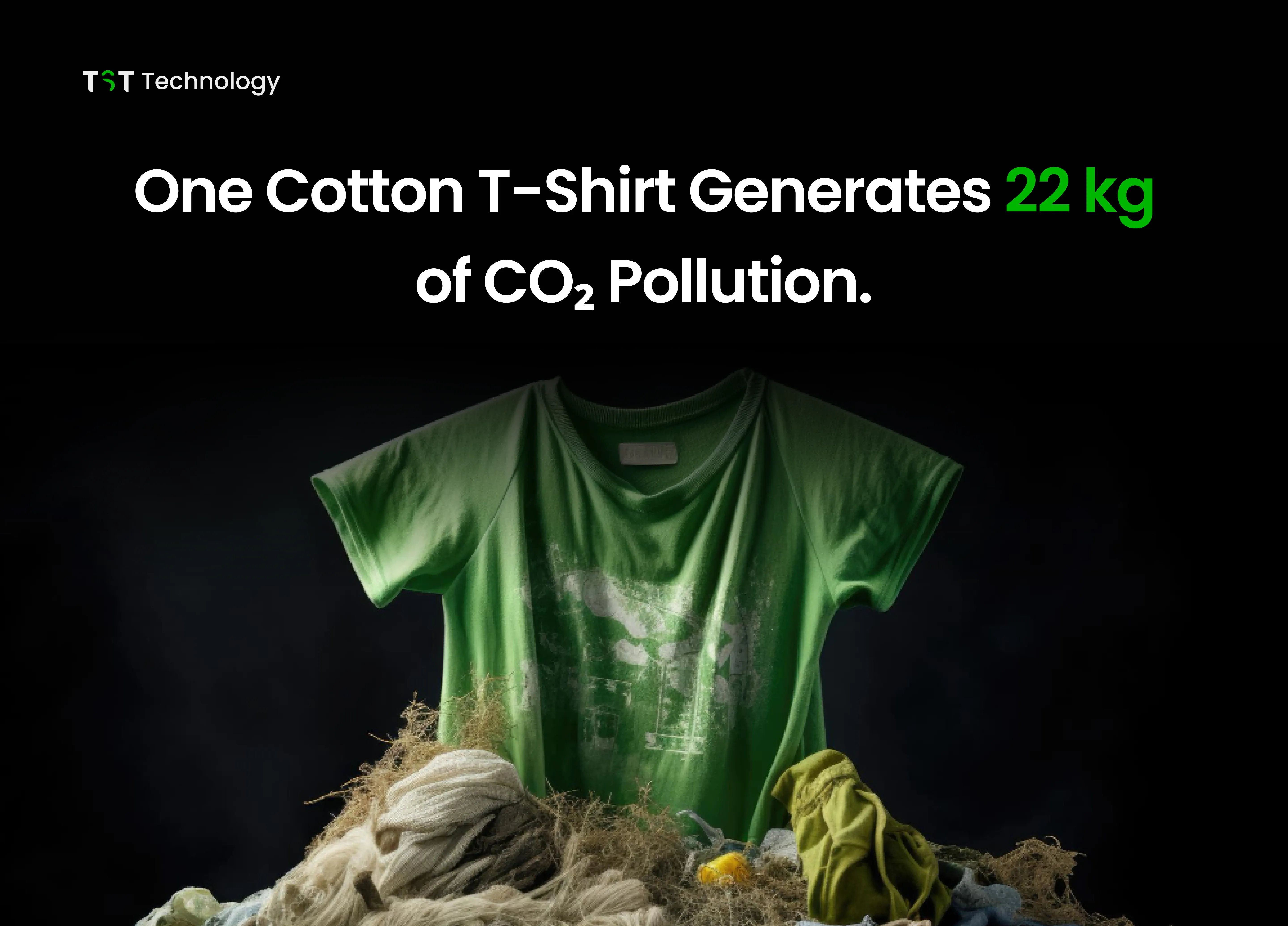
A single cotton t-shirt generates approximately 22 kg CO₂e during production, nearly 4 times higher than a smartphone's annual emissions. Fast fashion jeans are even worse, producing 16-22 kg CO₂e per pair. The fashion industry overall is responsible for 8-10% of global carbon emissions, more than all international flights and maritime shipping combined.
Unlike digital products that can be updated and maintained without physical waste, each new clothing item requires fresh raw materials, energy-intensive manufacturing, and chemical processing, including toxic dyes that pollute waterways.
2. Athletic Footwear
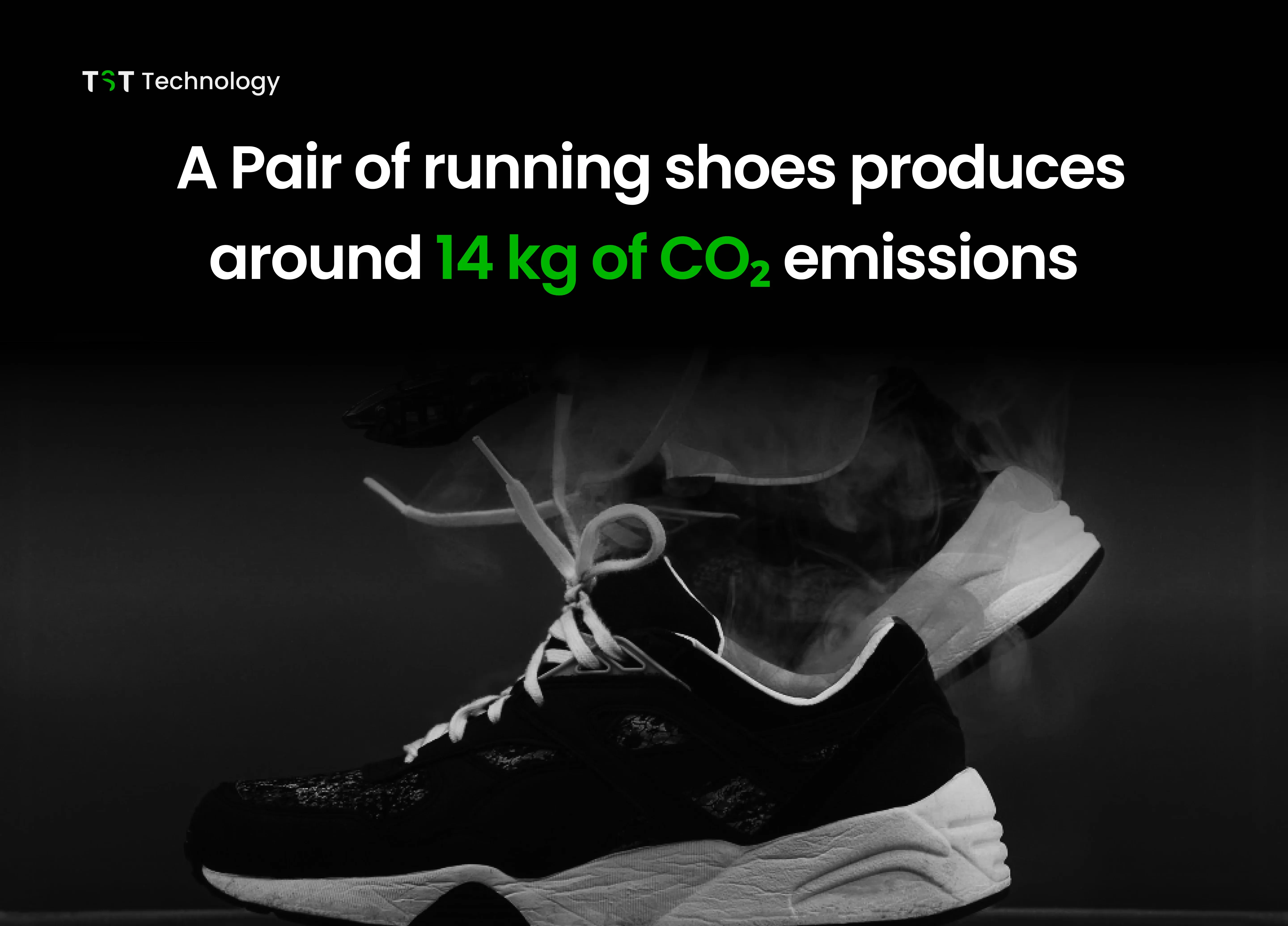
An average pair of running shoes produces around 14 kg of CO₂ emissions, about 18% more than the carbon footprint of a smartphone in its first year. The global sneaker industry produces 25 billion pairs annually, contributing 350 million metric tons of CO₂, equivalent to the emissions of entire countries like Canada or the UK.
Sneakers require 65 discrete parts and 360 processing steps for assembly. The majority of emissions (68%) come from manufacturing processes, often powered by coal in countries like China. Unlike software that can be copied infinitely, each pair of shoes requires energy-intensive processes like injection molding, heating, and chemical treatments for synthetic materials.
3. Single-Use Coffee Cup
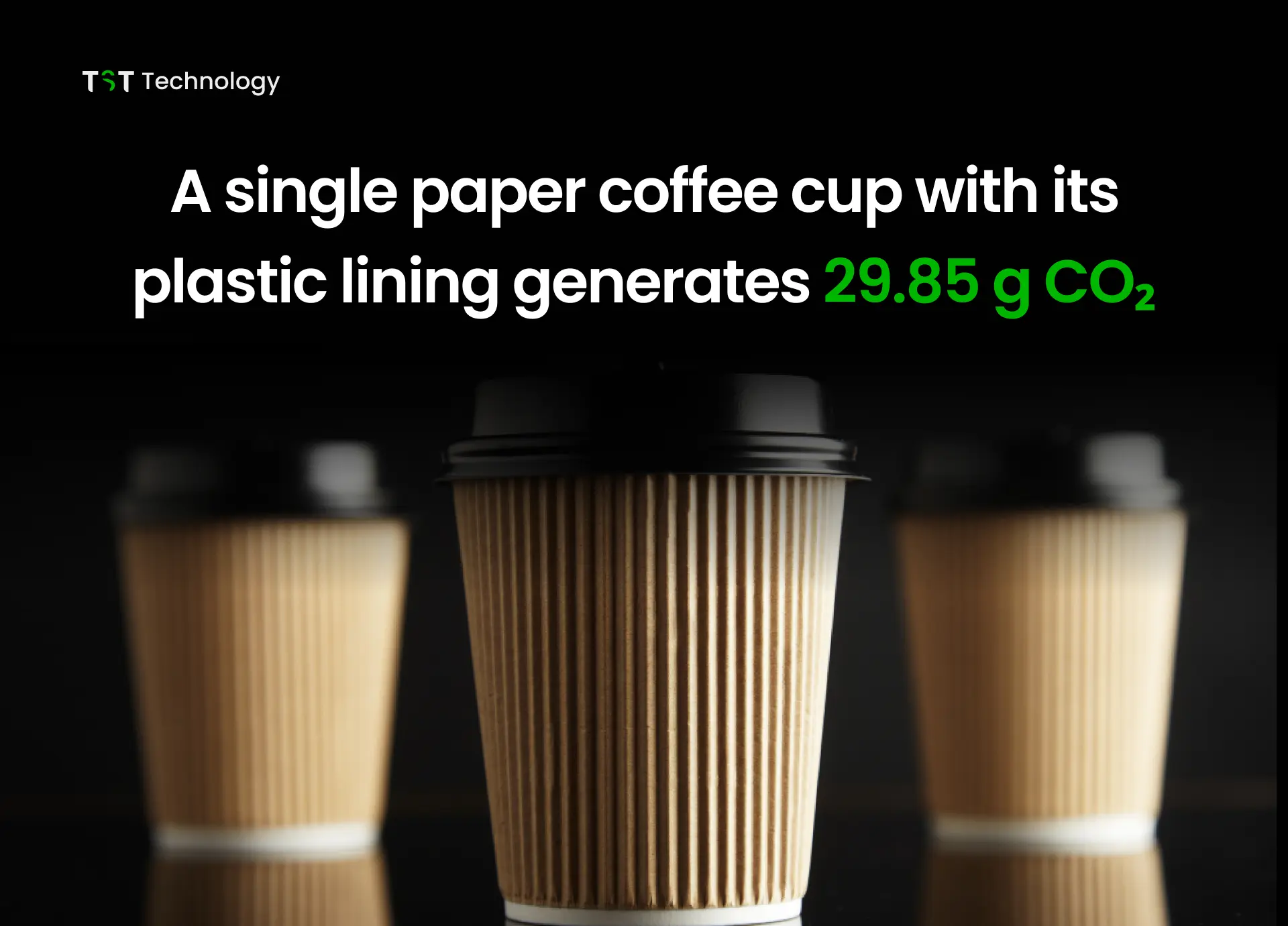
Your daily coffee cup habit has a surprisingly massive environmental footprint. A single paper coffee cup with its plastic lining generates 29.85 g CO₂e - nearly 3 times higher than a smartphone's daily usage emissions.
The environmental impact extends far beyond carbon emissions. Paper cups require 6.5 million trees to be cut down annually, consume 4 billion gallons of water, and use enough energy to power 54,000 homes for a year.
Unlike software that requires no physical materials for updates or copies, each coffee cup demands fresh raw materials, energy-intensive manufacturing, and generates immediate waste after a single 15-minute use.
4. Smartphone
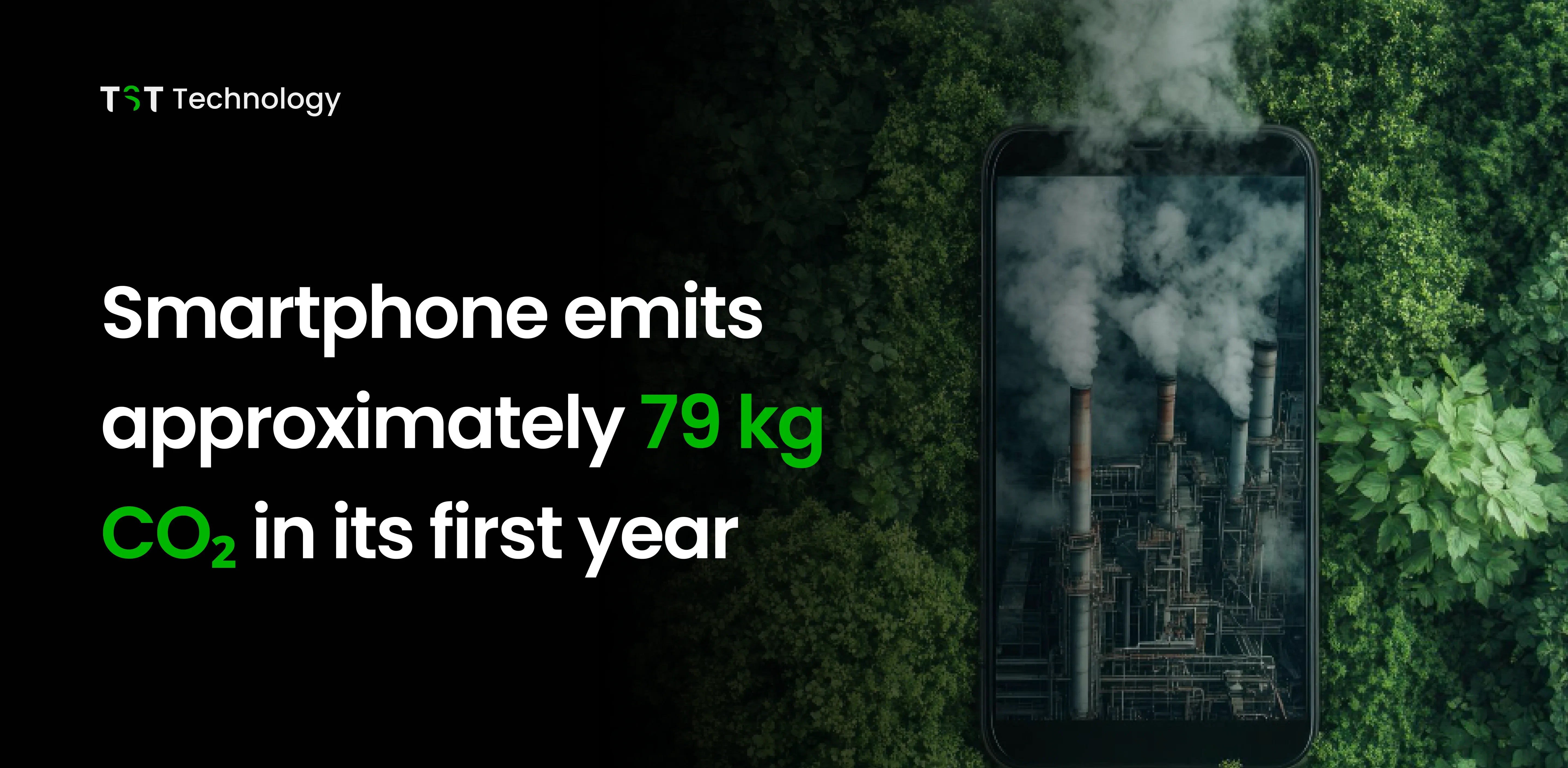
A new smartphone emits approximately 79 kg CO₂e in its first year, 83 percent from manufacturing (raw material extraction, assembly, shipping), 11 percent from usage, and the remainder from end-of-life processes. In 2022, the production of 1.4 billion new devices caused 146 million tons of CO₂ emissions. On top of that, 3.1 billion older devices also added more pollution.
The environmental impact of smartphones extends beyond emissions. Mining for materials like lithium and cobalt causes deforestation, water pollution, and human rights concerns in mining regions. Even recycling efforts are hindered by the complexity of disassembling devices and safely processing hazardous materials.
Software Example: Cloud Application
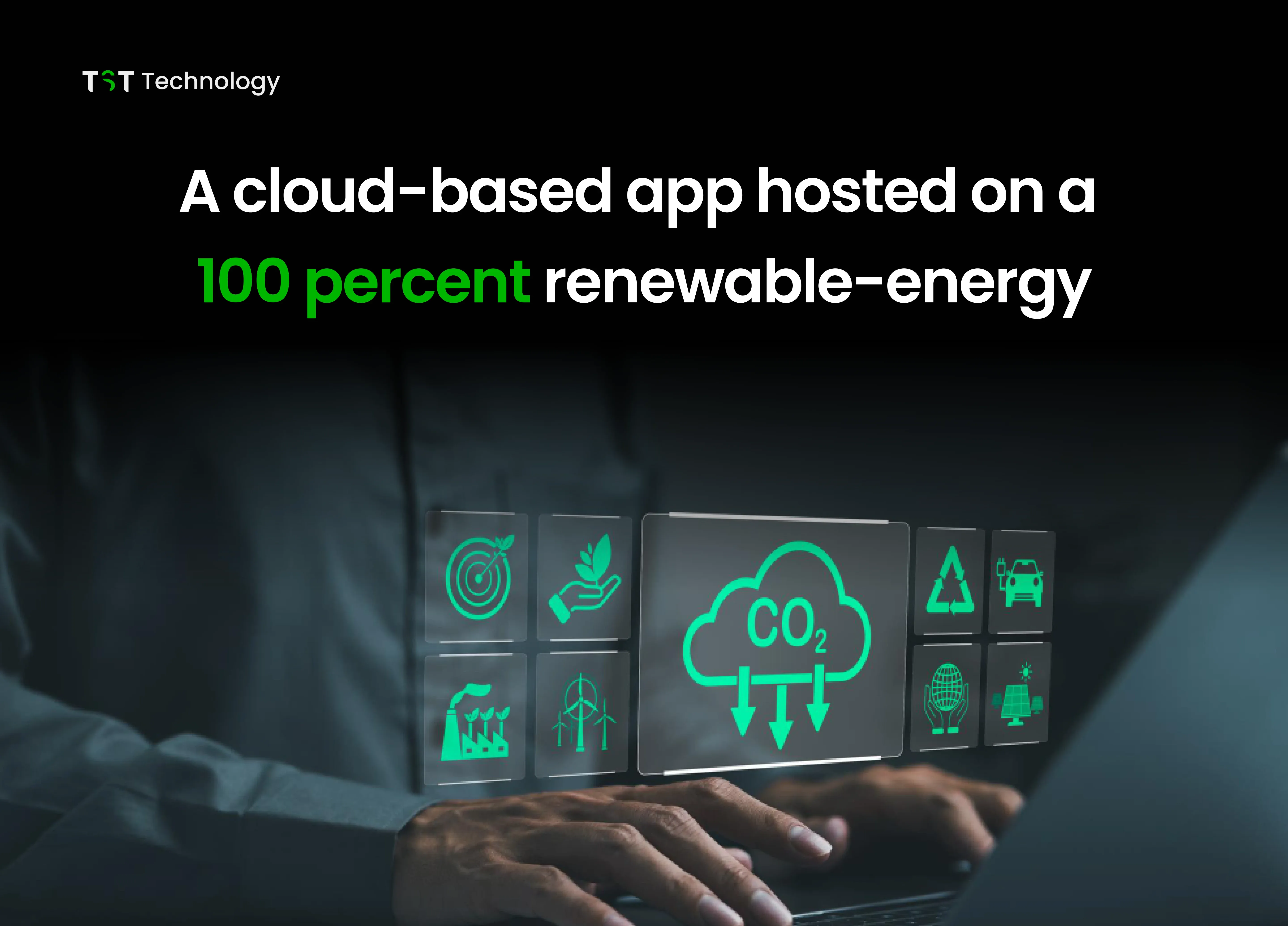
A cloud-based app hosted on a 100 percent renewable-energy data center (e.g., Google Cloud’s carbon-neutral operations) emits minimal CO₂. Updates and maintenance are purely digital, generating no physical waste and leveraging elastic computing to minimize idle consumption.
For example, a cloud-based productivity app like Google Docs allows millions of users to collaborate without the need for physical hardware beyond their existing devices. By replacing traditional paper-based workflows or hardware-heavy solutions, such apps further reduce environmental impact.
Why Is Software the Path to a Sustainable Future?
By prioritizing software solutions over hardware-heavy products, organizations and consumers can:
- Reduce direct carbon emissions by up to 27 percent of global CO₂ annually.
- Eliminate toxic e-waste and the associated environmental hazards.
- Leverage continuous innovation without expanding material resource extraction.
Ultimately, embracing green software practices and shifting business models toward digital-first solutions offers a scalable, efficient, and environmentally responsible route to achieving global sustainability goals.
Conclusion
Manufacturing generates heavy emissions and toxic waste, while software offers a cleaner, reusable, and low-carbon alternative. With no need for raw materials and the power to optimize continuously, software plays a key role in building a greener future.
At TST Technology, we’re proud to be part of this environmentally friendly sector. Every line of code we write helps reduce waste and cut emissions. By choosing digital-first solutions and following green software practices, we not only solve real-world problems but also help protect the planet.
Let’s build a cleaner future by writing better and more responsible code.






